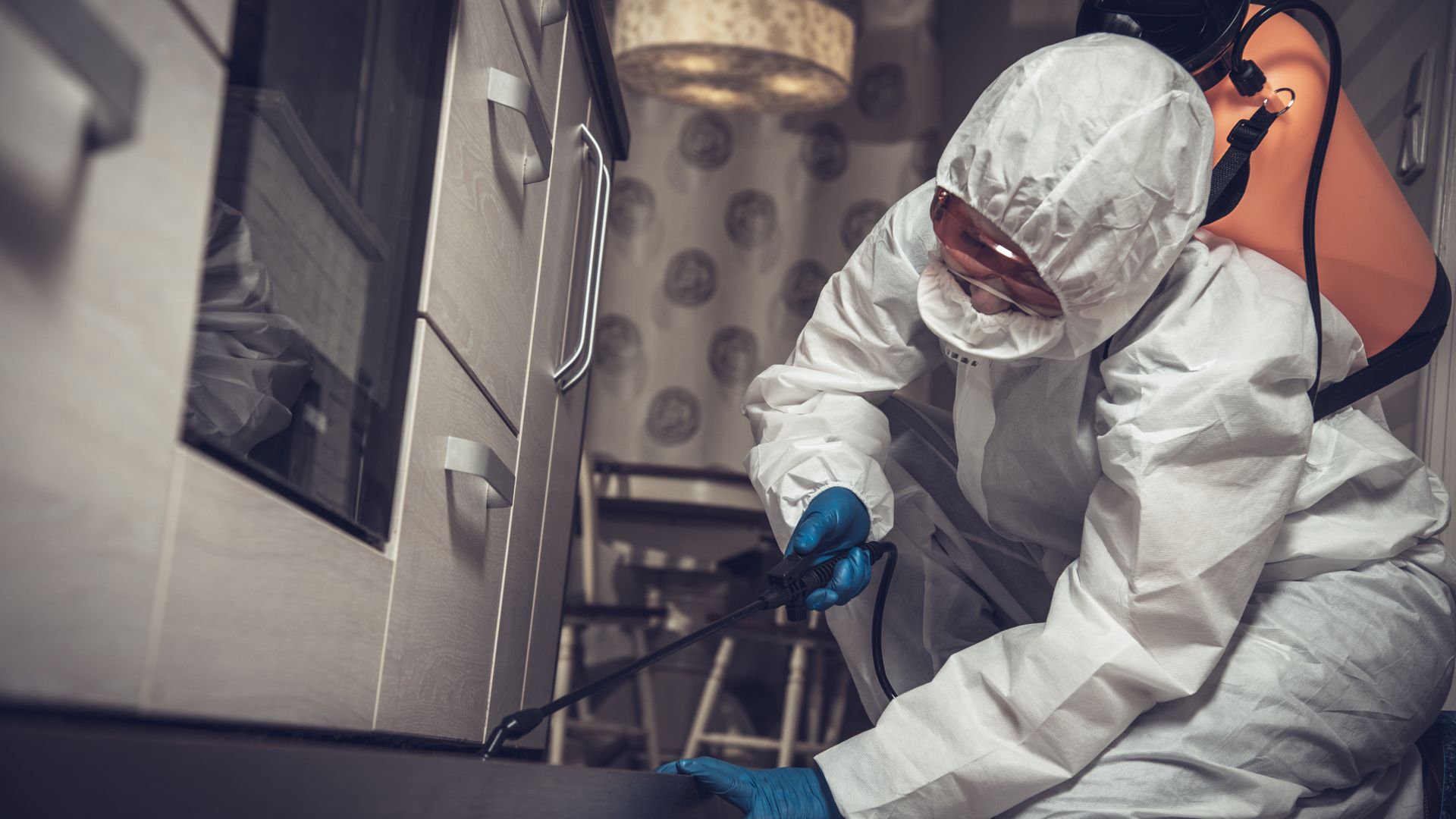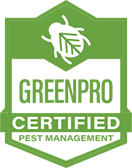
The Most Effective Termite Control Solution For Your Roseville Home
Plenty of pests may try to claim your Roseville home as theirs, but very few are capable of causing as much damage as termites. Each year, subterranean termites cost homeowners over a billion dollars in property damage.
That's a lot of money, and catching termite infestations early by recognizing the signs or getting an annual inspection can save you a lot of cash. Here's what Roseville homeowners should know about identifying termites, the damage they cause, what attracts them, and how you can get rid of them with pest control in Roseville (minus the stress).
How To Identify Termites And Their Damage
.2404181003550.jpg)
Termite infestations can go unnoticed for extremely long periods of time – even up to eight years. This is because the signs of termite infestations tend to be subtle, but if you know what to look for, they can be more obvious than you might think. Here are some of the biggest indicators that you've got a termite infestation on your Roseville property:
- Swarmers: Perhaps the biggest sign of a termite problem is spotting termite swarms on your property. During their mating season, termites swarm in large groups looking for a mate. You may see these flying termites, but it's more likely that you'll see the signs left behind from a termite swarm, like discarded wings.
- Frass: Termite droppings, also called frass, tend to resemble sawdust or coffee grounds since a termite's diet primarily consists of wood. You may find frass piled close to baseboards, windows, or doors.
- White ants: While termites and ants can look quite similar in size, their coloring can vary. If you see light or even white-colored "ants" near your home, they may actually be termites.
- Mud tubes: Subterranean termites create mud tubes near your home's foundation.
In addition to recognizing the signs of termites in the yard or home, it's also important to recognize different kinds of termites.
How do termites look? Termites can be one of the more difficult pests to identify since their appearance can vary based on the type of termite and their position in the colony. But regardless of subspecies, most termites tend to have a similar size and shape to ants.
Termite coloring can range from creamy white to dark brown, but most termites share the same distinct characteristics: thin waists, straight antennae, and six legs. Do termites fly? Not all termites can fly, but reproductive termites, or alates, do have wings and are capable of flight. Alates are still poor fliers and usually only fly until they find a mate and shed their wings.
Can termites bite? When it comes to biting, there's good and bad news with termites. While they can't bite or otherwise harm people, they can use their mandibles to chomp through wood and damage your home.


Ensuring your home and business are pest-free, explore our different service areas to see if we're local to you! Give us a call to get started!
The Stress-Free Way To Total Termite Protection For Your Home
When it comes to getting rid of active termites, there's really only one effective solution that will keep these pests out of your home permanently, and that's by working with the professionals at Neighborly Pest Management.
We're the trusted choice for pest management solutions in Roseville and surrounding areas. Whether you're dealing with subterranean termites, dampwood termites, drywood termites, or another species, we've got you covered with professional, eco-friendly solutions that will get the job done.
If you're seeing evidence of termite damage in your Roseville home, you shouldn't wait for these pests to cause any more damage to your property. Contact us today at Neighborly Pest Management to learn more about our termite control solutions or to schedule a free inspection of your home.
-
Same-Day & Emergency Services AvailableWhen possible, we can provide prompt assistance to help with your pest solution needs.
-
Local, Family Owned & OperatedRooted in our local communities, we know the best solutions for the pests in our unique areas.
-
We Offer Organic Treatment OptionsEmbrace a eco-friendly approach with our range of sustainable solutions for your needs.
-
45+ Years of Industry ExperienceTrust in our seasoned knowledge and proven track record spanning over four decades.
Factors That Attract Termites To Your Home And How To Remove Them
What attracts termites? Termites are generally attracted to the same few factors:
- Moisture and humidity: This is especially true for subterranean and dampwood termites. Drywood termites don't need as much moisture, but subterranean termites are most likely to settle into homes where there's a source of moisture.
- Cellulose materials, including wood: Termites eat cellulose, so it only makes sense that they'd be attracted to homes that are chock-full of it. Cellulose materials include things like wood, mulch, and cardboard. If your cellulose materials are also moist or rotting, that's even better in a termite's eyes.
- Damp, soft, or rotting wood: As mentioned above, any moist cellulose is attractive to termites, but they love soft, damp, and rotting wood the most. Watch out for rotting parts of fences, sides of your home, or other structures on your property. Once they find one source of food and moisture, termites will continue to look for others around your Roseville home.
Unfortunately, termites aren't the easiest pest to prevent. Unlike pests that may like to eat human food or leftovers, it's not always easy to prevent moisture or cellulose materials around your Roseville home.
And since these critters feast on cellulose materials, there are various ways for them to get inside your home. However, there are still a couple of tips you can use to reduce the risk of having termites, such as:
- Don't leave cellulose-based materials near your foundation: Cellulose-based materials, like wood, lumber, mulch, cardboard, and even paper, can all draw termites in – especially if placed near your foundation. Make sure you keep these items off your property or at least several feet away from your house.
- Create a barrier between mulch and your foundation: While it's common to keep gardens and mulch near the side of your home, this makes an easy pathway for termites. Using gravel or a similar material, create a barrier that's at least four inches between your mulch and foundation.
- Keep firewood away from the house: Stack any firewood or other wood products at least twenty feet away from your home.
- Don't let wooden siding touch the soil: Wood-to-soil contact is another easy path for termites, so try to keep any wooden siding at least six inches above the ground.
- Regularly check for damaged or rotting wood: Termites love wood, but they especially love moist, rotting wood. Don't forget to regularly check for damaged wood around your home or fences.
In addition to taking these steps above, you should always contact the professionals if you suspect a termite infestation around your home or property. Even with doing everything you can to prevent termites, it's still possible to end up with an infestation – or not know you have an existing infestation.

Hear From Our Happy Customers
At Neighborly Pest Management, your satisfaction is our priority! See for yourself what our customers have to say about working with us.
-
“We have been using Neighborly Pest for many years. While we have had many competitors come to our door, we have no interest in changing. Doug has been our technician during our entire service, and he is absolutely the best, always friendly!”- Brittany A.
-
“We can't share enough positive feedback about Doug and Neighborly Pest. Doug has always gone above and beyond to make sure our house stays bug-free!! He's considerate and always follows up to see how things are going after his visit.”- Sabrina C.
-
“I have been working with Doug from Neighborly for over two years now, and it has been a pleasure. He is always friendly and knowledgeable and has taken care of every pest situation we have encountered.”- Holly K.
-
“Adam was fantastic! Super friendly and professional. I felt at ease and knew I could ask any question, no matter how dumb it sounded, and he was able to answer and provide more information based on my concerns.”- Erin D.
-
“I've never had a bug problem since I switched to Neighborly. Danny is an awesome technician! He has a great personality and explains things thoroughly and gives me clear and detailed answers to any questions I might have.”- Joe B.
-
“Super friendly and professional. I appreciate the thoughtfulness and professionalism Adam displayed on our initial visit and feel confident he is taking excellent care of my home.”- Erin D.





